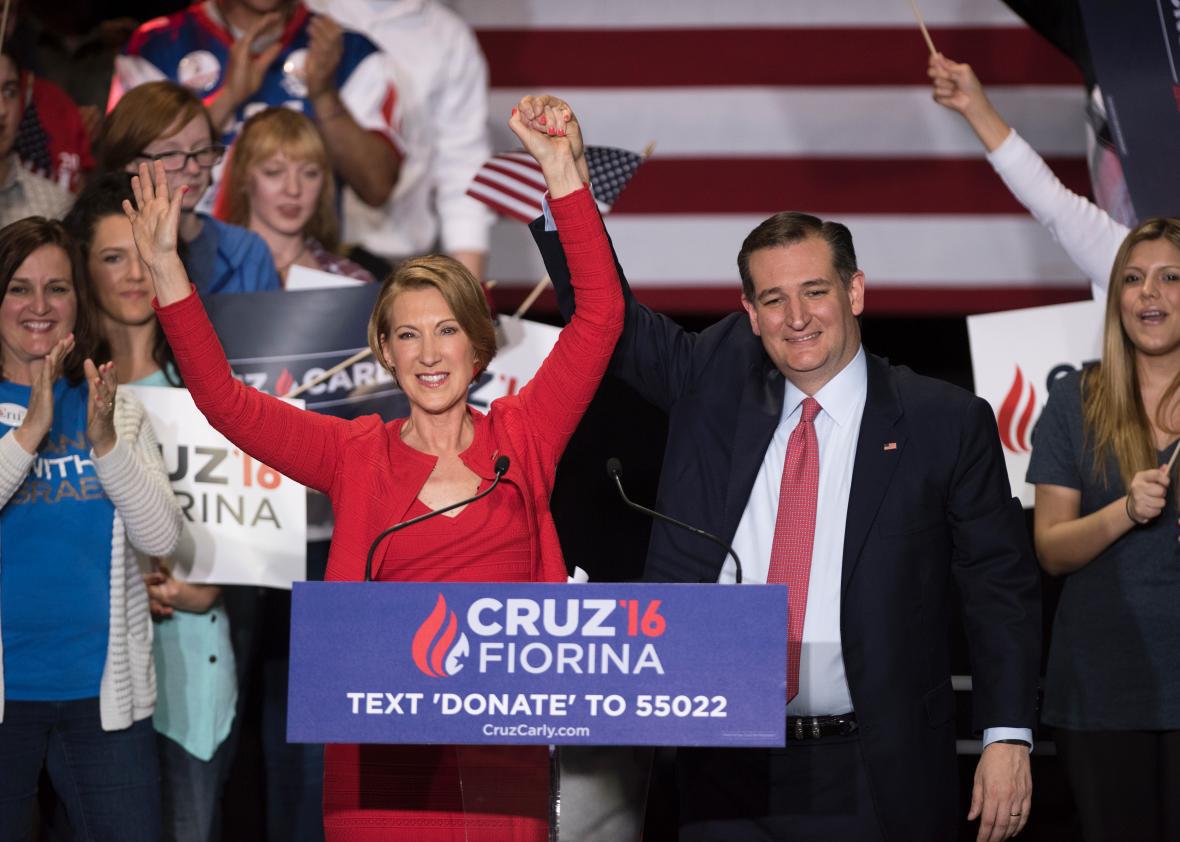It’s that time again! Indiana voters head to the polls on Tuesday to cast their ballots in nominating races that only feel like they’ve been going on forever. Here’s what you need to know ahead of a Democratic primary that will likely soon be forgotten, and a Republican one that may haunt the party establishment’s dreams for the next four years, if not longer.
The Basics
The Democratic contest—like all of the party’s primaries—splits its pledged delegate pool proportionally based on the final results. The Republican contest, meanwhile, is a winner-take-most affair: 30 delegates go to the statewide winner and another three to the winner of each of its nine congressional districts. Voting ends at 6 p.m. local time across the state, most of which is in the Eastern Time zone and two corners of which are in the Central. That means the networks won’t call either race before 7 p.m. ET.
The Democrats
There’s not much more to say at this point: Hillary Clinton is the prohibitive favorite to win her party’s nomination, and nothing that happens in Indiana—or anywhere else for that matter—is likely to change that. In fact, Clinton is a good bet to leave the Hoosier State in an even better position than when she arrived. Polling in Indiana has been a little hard to come by, but recent surveys show Hillary with a lead in the mid–single digits in the state, and Nate Silver and his FiveThirtyEight team peg her chances of winning Tuesday’s primary at 86 percent or better.
Bernie Sanders, meanwhile, is already acting like a candidate who knows he won’t win the nomination, and a loss Tuesday—or even a narrow victory that nets him a handful of delegates—will make it that much more difficult for him to pretend otherwise. Sanders is promising he’ll take his progressive fight all the way to this summer’s convention, which he very well may do. But even there, the best Bernie can hope to do is help shape the party’s platform, not become its nominee.
The Republicans
Despite the sparse polling, nearly all of the data we do have points to a Donald Trump victory in the GOP primary, and potentially even a blowout. The celebrity billionaire is currently up by an average of more than 9 points in the RealClearPolitics rolling average and seems to be gaining steam. The two most recent major state surveys—taken after Ted Cruz and John Kasich announced their we-swear-it’s-not-an-alliance alliance in the state—found Trump up by 15 points or more. Based on the polls, Nate Silver and his FiveThirtyEight team peg Trump’s chances of winning Tuesday’s primary at 97 percent.
If the polls are right, Trump could potentially walk away with at least 54 of the 57 delegates up for grabs in Indiana, and possibly all 57 of them if everything were to break his way. (Cruz’s best chance to prevent the sweep is in the state’s 5th congressional district, which includes Indianapolis’ northern suburbs, where voters tend to be wealthier and more educated.) That type of delegate bounty wouldn’t be enough to clinch the nomination for Trump, but it would put him in an enviable position to do just that on the last day of the GOP calendar with an all-but-assured victory in New Jersey’s winner-take-all primary and a strong, but not necessarily stellar performance in California’s winner-take-most contest.
Two weeks ago—before Trump steamrolled through the Northeast and mid-Atlantic—Indiana looked like a must-win for the GOP front-runner. Today, it looks like a must-win for Cruz and what remains of the crumbling #NeverTrump movement. Even if Trump loses, he’ll still have a clear—albeit narrow—path to the 1,237 delegates he needs to effectively clinch the nomination before the convention. When you factor in the 40 unbound delegates Trump appears to have picked up in Pennsylvania last week (I say “appears” because while those delegates have suggested they’ll vote for Trump they’re not actually obligated to), the former reality TV star now has 996 delegates to his name, putting him only 241 delegates shy of the magic number. To get there before Cleveland, he only needs to win 48 percent of the 502 delegates still up for grabs in the remaining contests. A near-sweep in Indiana would knock that number down to 42 percent.
A big win in Indiana would also reinforce the idea that Republican voters—like their elected officials—are slowly but surely coming around to Trump as he gets closer to the nomination. As David Wasserman points out, in the New York primary two weeks ago, Trump carried counties that border Pennsylvania with an average of 57 percent of the vote. A week later in the Pennsylvania primary, Trump carried counties that border New York with an average of 63 percent. National polls tell a similar story. Trump was sitting at 41.6 percent in the RealClearPolitics rolling average on the day of the New York primary two weeks ago. Today, he’s at nearly 45 percent, the highest his average has ever been.
As much as Indiana could help Trump, it could do even more to hurt Cruz. The Texan’s now thrown the political equivalent of two Hail Marys in the lead-up to Indiana—the first by cutting his passive-aggressive deal with Kasich, the second by naming Carly Fiorina as his running mate—and connected with neither. It’s not clear what else he can try to shake up the race. He’s been banking on the idea that he could unite the anti-Trump voters and force a contested convention. But as the race has gone on, it’s become clear that there aren’t nearly as many anti-Trump voters as he and his allies thought.
Read more of Slate’s coverage of the 2016 campaign.
